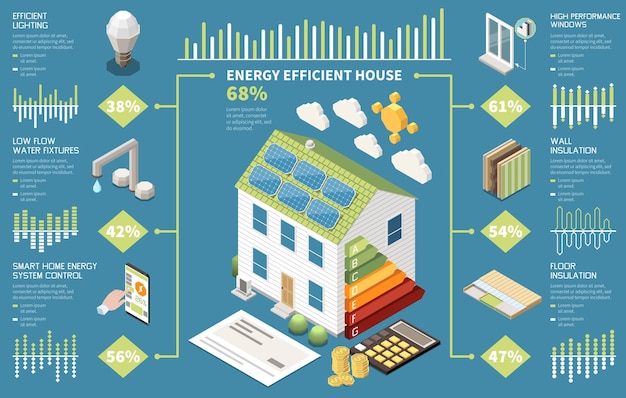Key Facts about Solar Panels

Solar panels harness the power of the sun to generate electricity.
Solar panels are made up of photovoltaic cells that convert sunlight into usable energy.
The use of solar panels helps reduce reliance on fossil fuels and decreases carbon emissions.
Solar panels are a renewable energy source, meaning they will never run out.
The first solar panels were invented in the 1950s.
Solar panels come in various sizes, shapes, and colors to fit different needs and aesthetics.
Installing solar panels can increase the value of a property.
The amount of electricity produced by solar panels depends on factors such as location, orientation, and weather conditions.
Solar panels are low-maintenance and have a long lifespan.
Solar panels can be used to power homes, businesses, and even vehicles.
Some countries offer incentives and rebates to encourage the use of solar panels.
Solar panels can still generate electricity on cloudy days, although at a reduced capacity.
Solar energy is one of the most abundant sources of renewable energy on the planet.
Solar panels can be a great investment, as they can help reduce electricity bills over time.
Solar panels are becoming increasingly affordable and accessible to households.
Solar panels can be installed on rooftops, open fields, or even floating on water bodies.
Solar panels are silent and produce no noise pollution.
Solar panels can help remote areas and off-grid locations access electricity.
Key Facts about Solar Panels part 2
Solar panels have a positive impact on the environment by reducing air and water pollution.
Solar panels can be combined with battery storage to provide electricity during the night or during power outages.
Solar panels can be part of a home’s overall energy-efficient design.
Solar panels can help reduce the demand for electricity from traditional power grids.
Solar panels can have a significant economic impact by creating jobs in the clean energy sector.
Solar panels can be used in tandem with other renewable energy sources, such as wind power or hydropower.
Solar panels are a reliable source of electricity, as they have no moving parts that can fail.
Solar panels can be installed in both urban and rural areas.
Solar panels have a high energy-conversion efficiency, meaning they can capture a large amount of sunlight and convert it into electricity.
Solar panels can contribute to energy independence, reducing reliance on foreign sources of energy.
Solar panels can be used to heat water in addition to generating electricity.
Solar panels can be connected to the electricity grid to sell excess energy back to the utility company.
Solar panels can be a solution for reducing electricity costs in commercial buildings.
Solar panels can operate silently, making them suitable for residential areas.
Solar panels are lightweight and can be easily transported and installed.
Solar panels can withstand extreme weather conditions, including high winds and hail.
Solar panels can help reduce the strain on power plants and transmission infrastructure.
Solar panels can be a viable option for countries with limited access to traditional energy sources.
Solar panels can be integrated into building materials such as roof tiles or windows.
Solar panels can be an educational tool for teaching about renewable energy and sustainability.
Solar panels have a positive impact on public health by reducing air pollution from fossil fuel power plants.
Solar panels can be a reliable source of electricity during natural disasters when the power grid is down.
Solar panels can be used for off-grid recreational activities such as camping or RV living.
Solar panels can help reduce the global demand for fossil fuels, mitigating the effects of climate change.
Solar panels require minimal maintenance, usually limited to occasional cleaning.
Solar panels have no operating costs once installed, making them a cost-effective energy solution in the long run.
Solar panels can contribute to a more sustainable and environmentally friendly future.

